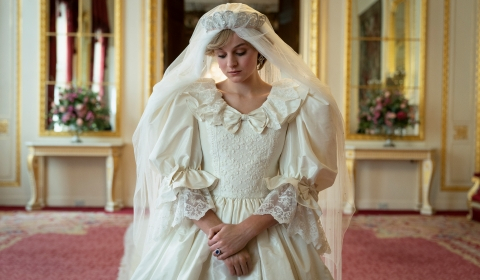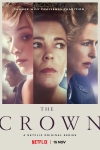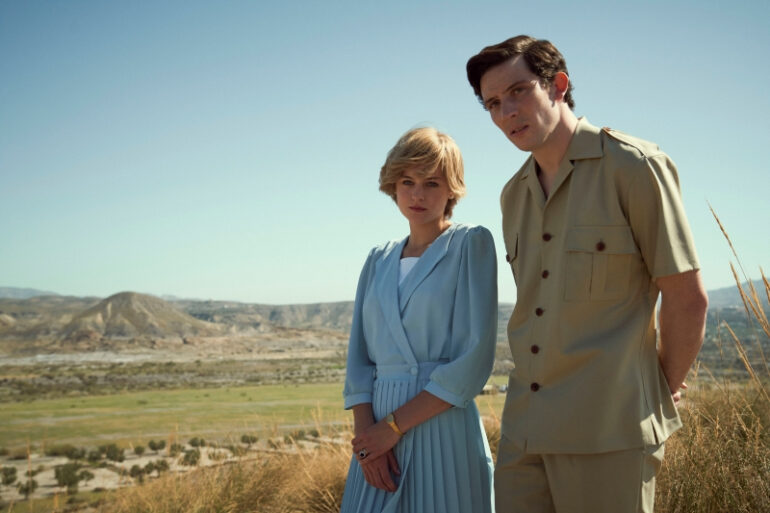Season 4 of The Crown shows the emotional complexity of Prince Charles’s and Princess Diana’s characters and their troubled marriage. The convincing yet controversial portrayal plays with the fine line between reality and fiction.
By Silvia Vacchelli
Pictures: Des Willie / Netflix
The historical TV drama The Crown is one of Netflix’s most successful productions, going strong since the release of its first season in 2016 and having won many prestigious awards for both acting and costumes. The British royal family is loved by many people all over the world because of its air of elegance, sophistication, and regality. However, its impossibly strict etiquette and stiff manners create an almost impenetrable façade, which leaves people wondering what the royals are really like behind closed doors.
Netflix answered that demand by creating a fictional window into the private lives of Queen Elizabeth and her family, starting in the first year of her reign in 1952. Yet, the more the series approaches the present time, the finer the line between fiction and reality becomes and troubles may arise, as was the case with this year’s season. Season four explores the hot topic of the troubled and turbulent relationship of Prince Charles and Diana Spencer. It has sparked a controversy and some critics even requested Netflix to add a disclaimer underlining that the facts portrayed in the show have been fictionalized.

Diana the Saint, Diana the Troubled
The figure of Diana, »the people’s princess«, has often been idealized by media outlets. In the past years, many memoirs and documentaries – such as the most recent In Her Own Words (2017) – have been produced telling her side of the story. Netflix manages to give a more balanced representation of Diana, as both a victim and a troubled and unhappy soul. The first three episodes have the princess depicted as the »sacrificial lamb« to be married to the heir to the throne, because in Princess Anne’s words she is »the perfect one in age, beauty and breeding«. She is a sweet, romantic girl, who is too young to understand what she is getting herself into; yet once she finds out about Charles’s relationship with Camilla, she falls deeper and deeper into a spiral of bulimia, and depression. However, she is not always a »saint«: we often see her put her foot down and rebel against the royal etiquette, especially regarding her children, in a family in which her role as a royal comes before everything else. She is a fish out of water who decides to join a very unusual family, whose rules she does not understand nor approve of.
Since the royal family tries to avoid scandals and gossip and follows a policy of impartiality, Charles’s point of view on his marriage has often been neglected. All we have is the story told by Diana, who portrays him as a cheater, selfish, »hot and cold« man (Diana: In Her Own Words). The Crown tries to create a more three-dimensional figure; in the previous seasons about Charles’s unhappy childhood many viewers began to sympathize with the eternally inadequate heir to the throne, while in this one we see Charles’s two faces: Diana’s Charles, a man who designs a bracelet for his lover just a few days before his wedding with another woman, and a man who, instead of helping his wife battling her depression, calls her weak and pathetic. On the other hand, he is a person trapped in a marriage he never wanted, with a wife his family pushed him to marry because of her perfect credentials. He is never allowed to follow his heart and because of his insecurities he feels threatened by Diana’s popularity, which eclipses his precarious one.

The Crown
Created by Peter Morgan
Starring Gillian Anderson, Olivia Colman, Josh O’Connor, Emma Corrin, and others
Netflix: UK/USA 2016-present
Disclaimer or No Disclaimer?
If the previous seasons were received positively even by the Windsors, this one has been highly criticized by royal historians and people close to the British family. They believe that some events have been drastically changed and that the personalities of both Prince Charles and Princess Diana have been altered for entertainment purposes. Netflix chose not to include any disclaimer about the truthfulness of the series and has no intention of doing so in the future, claiming that the viewers are able to understand that this is not a documentary but a fictive series.
However, at the end of some of the episodes photos of the real-life people portrayed in the scenes and their historical background are shown. For example, in the episode about Michael Fagan, a man who managed to enter the Queen’s bedroom at Buckingham Palace in 1982, ends with his photograph and a brief explanation of his arrest and his life after the event. This is a controversial choice, because it makes the spectator associate involuntarily what they see in the episode with the truth and a proof of its historicity, dangerously crossing the bridge between documentary and fiction.
As a viewer, when a TV show is so well written, acted, and rendered, it becomes difficult not to get emotionally involved and to forget that the characters are not real, especially if they are based on existing people. Moreover, the show plays with our need to believe that behind all the splendid grandeur, the royals are just like us; they fall in love with people they should not, they fight with their relatives and they constantly feel under pressure of being what others expect them to be.






